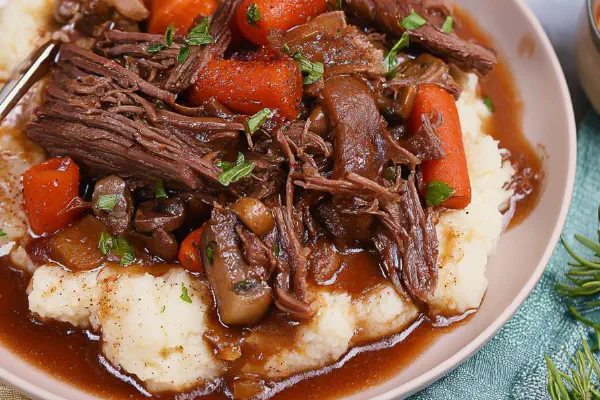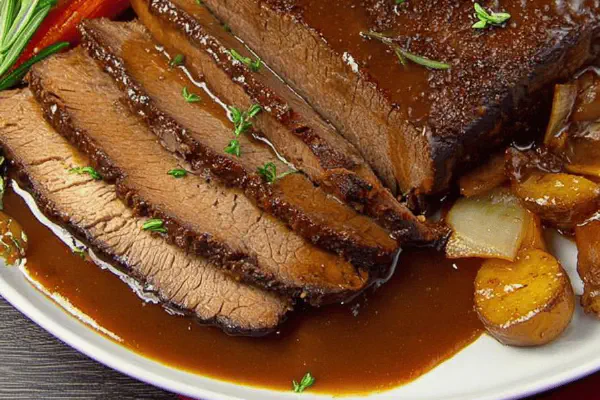Parsnip Risotto Twist

E
By Emma
Certified Culinary Professional
•
Recipe tested & approved
A creamy risotto spiked with sweet roasted parsnips and fresh sage. Arborio rice cooked slowly with warm broth to plump, absorb, and become tender. Mascarpone swapped with cream cheese adds a tangy silkiness; Parmesan stays for the salty punch. Onions and parsnips sautéed till golden with sage releasing herbal notes. White wine sharpness hits first, then broth joins the party. Stir often to coax creamy starches. Watch the rice, it’s done when teeth meet soft centers and grains release a subtle chew. Visual cues drive timing. Mistakes? Use chicken broth if veggie stock is absent. Burnt bottoms ruin texture—keep stirring and heat gentle. A rustic take where texture, aroma, and layering flavors matter.
Prep:
12 min
Cook:
42 min
Total:
54 min
Servings:
6 servings
#Italian-inspired
#vegetable risotto
#comfort food
#slow cooking
#savory dishes
Parsnips and risotto sound cozy but can go sideways fast. I learned layered patience in risotto makes all difference. Temperature tightrope on broth and butter sizzle shifts mouth feel from chalky to luscious. Roasting parsnips first gave too much caramel—this time soft sauté with sage set a steadier sweet earthy baseline. Swapped mascarpone for cream cheese here to add a slight tang; it plays well with nutty Parmesan. White wine is the acid anchor but I never let it linger wet or risotto turns a sloppy mess. Watch the rice edges glow translucent with a few browned specs — that’s when you know starch is waking and rice wants more broth. Letting it rest just off heat finishes the marriage. Foods aren’t just recipes. They are live experiments about timing and textures. Some days the stock temperaments vary; that’s where intuition steers the pot, not the clock.
Ingredients
- 6 cups warm vegetable or chicken broth
- 3 tablespoons unsalted butter
- 1 small onion, finely chopped
- 2 cups diced parsnip
- 1 teaspoon fresh sage leaves, chopped
- 1 1/2 cups arborio rice
- 1/2 cup dry white wine
- 1/2 cup cream cheese, softened
- 3/4 cup grated Parmesan cheese
- Salt and freshly ground black pepper to taste
About the ingredients
Parsnips—can swap with carrots, though parsnips bring that mild nutty sweetness with a slight peppery background. Butter is traditional but for dairy-free, use olive oil; flavor profile shifts but still tasty. White wine adds acidity and complexity; no wine? Splash with lemon juice or white grape juice but add gradually and taste often. Arborio rice mandatory for creaminess; never short grain or basmati. Cream cheese in place of mascarpone brings tanginess and thicker texture — mascarpone smoother, cream cheese more rustic. Parmesan can be Pecorino Romano for sharper salt note. Fresh sage leaves best, dried is too intense and bitter if not measured carefully. Vegetable broth good and lighter, chicken broth richer but salt content varies—adjust seasonings as you go.
Method
- Start by warming the stock in a saucepan; keep it barely simmering, no roiling boil. Keeping broth just shy of bubbling guarantees gentle absorption by the rice, less chance of texture mishaps.
- In a wide pan melt butter, watch it foam then subside. Toss in onions and diced parsnips with sage leaves. Sauté over medium heat till onions soften and parsnips begin to brown lightly. About 6 minutes. Sage should release an earthy aroma you can smell distinctly now.
- Add the arborio rice. Stir continuously; grains should become translucent at edges and develop a slight toasted speckle, indicating starches starting to loosen. Around 5-6 minutes. Avoid rushing or high heat here or rice ends up raw in center or mushy outside.
- Pour in white wine. Listen for gentle hissing as alcohol evaporates and acidity infuses in. Stir until liquid vanishes completely. This first acid soak brightens the overall risotto, prepping rice for layers of flavor.
- Begin adding warm broth in increments, roughly 3/4 cup at a time. Wait till each ladle fully absorbs, stirring often but gently to gag starches free. I like to scrape the bottom lightly, prevent sticking. If heat too high, bottom scorches —bitterness kills risotto subtlety.
- When most broth is used and rice is creamy with grains tender but with a slight chew at center, roughly 35 minutes in, it's time to enrich. Off heat fold in cream cheese and Parmesan. Stir brisk gently till fully incorporated. Should melt into a silky coating but not runny puddle.
- Season with salt and pepper. Sometimes a pinch extra salt needed since cream cheese softens punch. Let risotto rest covered 5 minutes. Texture firms slightly, aromas meld.
- Serve immediately. Garnish with extra Parmesan or a few sage leaves if you want green pop. Risk of reheating is gritty texture due to rice starch crystallization, so best fresh.
- Common swaps: if cream cheese missing, mascarpone works but risks overly sweet tone. If no wine, lemon juice splash with broth can mimic acidity but less depth. Broth too salty? Dilute with water and adjust salt late.
- Biggest trap: rushing liquid additions. Let rice dictate pace — gently coax, don’t drown. Stirring rhythm critical. Too frequent stirs break grains, too sparse causes scorching.
Cooking tips
Broth temperature matters—warm stock absorbs faster without shocking the rice. Butter melts as flavor base, sautéing onions and parsnips together lets sugars caramelize gently without burning. Watch parsnips color—they should soften but maintain shape, no blackened edges or you risk bitterness. Arborio rice tossing lets grains toast subtly, releasing starch. Adding wine first allows acidity to penetrate, vital for balancing richness later. Broth additions staged: add small amount, let it absorb fully before next addition. How to tell? Rice surface looks creamy, liquid mostly gone, rice slightly sticking to spoon. Patience here pays off; heat should stay medium-low—too hot sticks or cooks unevenly. Stirring isn’t constant whipping—gentle, steady. Final fold of cheeses thickens texture, binds flavors. Resting off heat lets risotto firm, texture settles. Avoid reheating to prevent gummy grain collapse. Marble slab or wooden spoon ideal tools; metal spoons scrape bottom too aggressively risking breakage.
Chef's notes
- 💡 Warm the broth first — barely simmer not boil. Cold or hot shock messes rice texture quick. Keep heat low under pot.
- 💡 Sauté parsnips and onions with sage till soft but no black spots. Aroma is your cue, earthy and herbal. About 6 minutes gives tender bite.
- 💡 Add arborio rice dry; stay steady with stirring. Toast edges till translucent, slight brown specs form. That starch release controls creaminess, no rush.
- 💡 Wine goes in slow, listen for hiss, no puddles left. Acid hits sharp but disappears fast. Lemon juice swap works if wine absent but add very gradually to taste.
- 💡 Broth in increments, 3/4 cup at a time. Let fully absorb. Spoon scraping bottom avoids scorched bitterness. Patience matters. Too hot burns flavor fast.
- 💡 Fold cream cheese and Parmesan off heat. Cream cheese adds tangy silk not runny. Parmesan salt balances softness. Stir brisk but gentle.
- 💡 Salt sparingly late; cream cheese softens punch so adjust carefully. Rest risotto covered 5 minutes—firm texture and flavor marry here.
- 💡 Parsnips swap carrots if needed; carrots sweeter, less peppery. Butter can be olive oil but shifts flavor notes. Pecorino Romano can replace Parmesan for saltier hit.
- 💡 Use chicken broth if vegetable broth missing for richer taste, but watch salt levels. Dilute salty broth with water and taste often.
- 💡 Stirring rhythm crucial—too often breaks grains, too sparse scorches bottom. Texture clues: rice edges translucent, slight chew center. Trust senses over timer.
Common questions
Can I use different rice than arborio?
Short grain only—risotto texture depends on starch. Long grain or basmati won’t cream properly. Arborio needed. Otherwise, grain integrity lost.
What if no wine available?
Add splash lemon juice with broth. Less complexity but acidity helps starch release. White grape juice possible too. Add bit by bit, taste as you go.
Risotto too sticky or mushy?
Might be stirring too much or heat too high. Rice breaks down starch faster. Lower heat. Stir gently, consistent but don’t whip nonstop.
How to store leftovers?
Cover, refrigerate up to 2 days. Reheat gently with splash broth or water, stir slow always. Avoid microwave blasts—they toughen grains, ruin creaminess.



